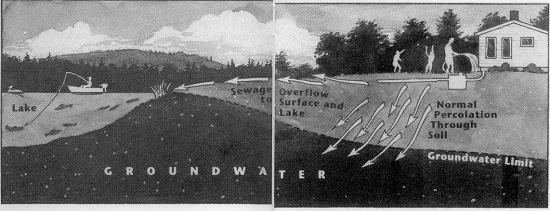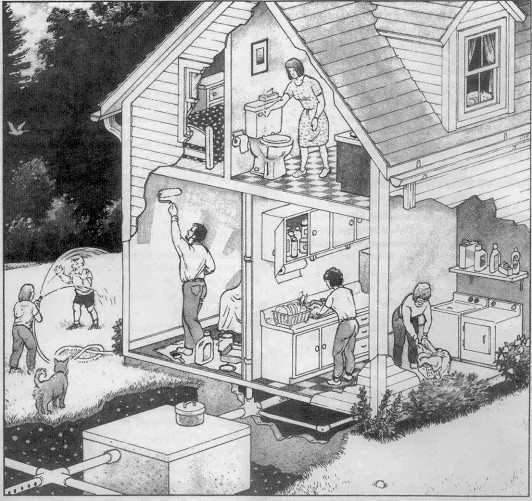What Makes a Septic System Fail?
There are two primary types of septic system failure: hydraulic failure and phosphorus treatment failure.
Hydraulic failure occurs when the soil cannot handle the volume of wastewater, and as a result sewage overflows into the house.
This is caused by:
- Failure to pump out the tank
Wastewater will back up into the house or break out onto the ground when sludge and scum from an overfull tank flows into the leach field and clogs the soil. - Poorly sited or built systems
When the septic system is sited in or too close to the high water table, or is constructed with improper fill, saturated soil can cause wastewater to back up or break out. This is particularly likely to occur in the spring, when the water table is high. - Tree and bush roots
Tree and bush roots over a leach field can break or block pipes and interfere with the distribution system.


Phosphorus treatment failure occurs when coarse, sandy soils allow phosphorus to pass untreated through to the groundwater. In this case all the pipes and pumps are working properly, and there is no apparent evidence of malfunction. The problem lies in the inability of surrounding soils to absorb and treat the phosphorus.


